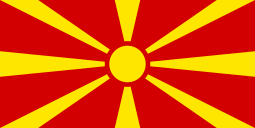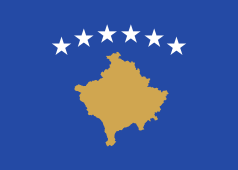Province of Belluno
| Province of Belluno | ||
|---|---|---|
| Province | ||
| ||
 Map highlighting the location of the province of Belluno in Italy | ||
| Country |
| |
| Region | Veneto | |
| Capital(s) | Belluno | |
| Comuni | 69 | |
| Government | ||
| • President | Vittorio Capocelli Prefectural Commissioner | |
| Area | ||
| • Total | 3,678 km2 (1,420 sq mi) | |
| Population (2012) | ||
| • Total | 212,667 | |
| • Density | 58/km2 (150/sq mi) | |
| Time zone | CET (UTC+1) | |
| • Summer (DST) | CEST (UTC+2) | |
| Postal code | 32100 | |
| Telephone prefix | 0437 | |
| Vehicle registration | BL | |
| ISTAT | 025 | |
The Province of Belluno (Italian: Provincia di Belluno; German: Provinz Belluno) is a province in the Veneto region of Italy. Its capital is the city of Belluno.
It has an area of 3,678 square kilometres (1,420 sq mi) and a total population of about 200,000.
Geography
The province of Belluno is rather wide, and almost entirely occupied by mountain areas. It encompasses the natural and historical regions of Cadore, Feltrino, Alpago, Val di Zoldo, Agordino, Comelico and Ampezzano. The eastern part of the province features the Dolomites, including the famous Tofane, Marmolada, Tre Cime di Lavaredo and Antelao. The province is rich in water, with the presence of the wide Piave River, with its affluents Boite and Cordevole.
The southern part is called Valbelluna, the widest and most populous valley of the province, which is bordered by the Venetian Prealps. The National Park of Belluno Dolomites is located in the province.
Climate
The province of Belluno's climate is among the most severe in the Alps. It is mostly influenced by the continentally, provided by the Dolomites and it is very similar to the eastern Tyrol's climate, or even more severe in the Prealps of the southern side.
The province may be divided in the following climatic zones:
- The lowest valleys, at approximately 700 metres (2,300 ft), that usually have an almost mild climate, at the boundary line between the Oceanic climate Cfb and the humid continental climate Dfb: the coldest month’s average is usually between 0 °C and −3 °C. The summers are hot but not as hot as the valleys of the rivers Po and Adige. The hottest month’s average temperature is between 18 °C and 21 °C. This area, as most of the oriental Alps, is very wet. Belluno’s precipitation average is above 1300 mm per year, snow is usual during all the winter months, and may occur even in March or November. Some years the winter may be milder due to the humidity, with averages around the freezing point, and big snowfalls with frequent snowbound. Main cities in this area: Belluno, Feltre, Seren del Grappa.
- The midland’s valleys, between 700 m and 1500 m (or until 1300 meters in the Prealps area), which have a typical humid continental climate Dfb. This climate is more severe in the extreme northern or southwestern regions of the province, while the central region (near Arabba or Cortina d’Ampezzo) is usually milder. Winter’s average temperature is between −7 °C and −5 °C in the North and Southwest during January, and between −5 °C and −3 °C around the central region. The coldest town, Santo Stefano di Cadore, at an elevation of only 900 meters, has temperature averages in January between −7 °C and −6 °C. Other towns of relatively low elevations have really low averages, which would be found only above 1700 meters in other Italians provinces, as well as in any French or western Swiss provinces. The snow season depends on the altitude. Between 700 and 1200 meters, from early November until the middle of March, between 1200 and 1500 (or 1600 in Arabba), from late October until late April. The summer is usually wet and mild, but hotter than areas at the same altitude in the occidental valleys. In the lower lands (around 900 meters) temperature average around 16 °C or 17 °C. In higher lands (around 1400 meters) average around 14 °C. Rain is usual from March until November. Some towns and villages with this climate: Santo Stefano di Cadore (severe), Cortina d'Ampezzo (mild – sometimes Cfb), Arabba (mild if considered the altitude), Auronzo di Cadore (severe), Danta di Cadore, Sappada.
- The valleys around 1500 to 1900 meters, with cold continental climate Dfc. It is the wettest climate of the province. Some areas on the southern side of the province may receive more than 2,000 mm (79 in) of precipitation per year, especially near the lakes, which can’t make the climate mild in this region, as in other alpine regions. Winters are very cold and snowy, with temperature averages between −9 °C and −5 °C. The snow season usually starts in late September and lasts until late May Snows are not frequents, but can occur even during the summer, in early September or late August. The summer is rainy, sometimes foggy, and cool. Temperatures average in July between 10 °C and 12 °C. This area has a very few numbers of sunny days per year, and the average sunshine hours per day is also quite low, around 1 hour or less in January and around 4 or 5 hours in June and July. Due to the severity of the climate, only a few villages are found in this area, usually fractions of other towns. One of the most inhabited places in this area is Misurina, a village near the lake with the same name.
- The high lands, above 1900 meters, with mountain’s tundra climate ET. There are no inhabited places in this area. All the months have temperature averages below 10 °C. Above 2000 meters the precipitation rate starts to decrease. The higher places are drier, and sunnier. The winter temperature averages in the mountain areas vary according to the altitude, and are always milder than the valley’s temperatures at the same quote. In January, the average temperature in mountains areas are around −3 °C at 1500 m (while they can reach −6 °C in valleys), −6 °C at 2000 m, −8 °C at 2500 m and −10 °C at 3000 meters. Summers are cold above 2000 meters. The average temperature in July is around 12 °C at 1500 m, 8 °C at 2000 m, 6 °C at 2500 and 3 °C at 3000 meters. In Belluno province, the perpetual frost climate EF is not found, because the highest point, the Marmolada, at a few more than 3200 meters, has summer’s average temperature of approximately 20 °C.
History
.jpg)
The oldest archaeological find in the province is that of Lagole di Calalzo, in Cadore, belonging to a c. 5th century BC sanctuary dedicated to a health god of Paleoveneti. A larger site, a necropolis, has been excavated in the commune of Mel. Findings from these sites are now housed in the Museums of Pieve di Cadore and Mel.
From 1420 until 1797, the area of Belluno was part of the Republic of Venice. When conquered by the French, it became a subject of the Austrian Empire as a part of Venetian Province. Belluno remained under Austrian control after the Napoleonic Wars, as part of the Kingdom of Lombardy–Venetia until 1866, when it was ceded to the newly formed Kingdom of Italy. In 1923, the Province of Belluno obtained Cortina d'Ampezzo, Saint Lucia and Livinallongo Colle del Col di Lana which had been part of Austria-Hungary (the County of Tyrol).
In 1943, when the Italian government signed an armistice with the Allies, the province was occupied by Nazi Germany, which reorganised it as the Operation Zone of the Alpine Foothills and put it under the administration of Gauleiter Franz Hofer. The region was de facto annexed to the German Reich (with the addition of the region of Trentino-Südtirol) until the end of the war. This status ended along with the Nazi regime and Italian rule was restored in 1945.
Economy
Until recently, the province's economy was based on poor mountain agriculture, now less important, with the exception of the cultivation of beans in the Lamon highlands and the production of Piave cheese in the Dolomites valleys. Today, Belluno has one of the most important industrial sectors of northern Italy, the production of eyeglasses (Luxottica has its headquarters in Agordo, for example). Also important are the manufacturing sectors of home appliances (Zanussi and others) and bathroom fixtures (Ceramica Dolomite, IdealStandard).
One of the most important factors of the Bellunese economy is tourism. Cortina d'Ampezzo, Alleghe, Arabba, Sappada, and other locations are renowned in Italy and abroad.
Linguistic minorities
In the province, language minorities are present, which are now recognized by law:
- a Ladin minority is present in the three communes of Colle Santa Lucia-Col, Livinallongo del Col di Lana-Fodom and Cortina d'Ampezzo-Anpezo.
- a German-speaking minority in the commune of Sappada-Plodn, Farra d'Alpago and Tambre.
Inhabitants with foreign citizenship
The top ten countries of origin of the inhabitants of Belluno with foreign citizenship at December 31, 2010 were:[1]
 Morocco 2003
Morocco 2003 Romania 1663
Romania 1663 Albania 1441
Albania 1441 Ukraine 1329
Ukraine 1329 China 1220
China 1220 Macedonia 1006
Macedonia 1006 Moldova 715
Moldova 715 Croatia 557
Croatia 557 Kosovo 378
Kosovo 378 Serbia 330
Serbia 330
Comuni
There are 69 comuni (singular: comune) in the province. As of June 30, 2005, the main comuni by population are:
| Comune | Population |
|---|---|
| Belluno | 36,112 |
| Feltre | 20,122 |
| Sedico | 9,174 |
| Ponte nelle Alpi | 8,180 |
| Santa Giustina | 6,517 |
| Mel | 6,288 |
| Cortina d'Ampezzo | 6,216 |
| Limana | 4,670 |
| Trichiana | 4,604 |
| Pedavena | 4,435 |
| Agordo | 4,225 |
| Longarone | 4,114 |
| Cesiomaggiore | 4,096 |
| Pieve di Cadore | 4,017 |
References
External links
- (in Italian) Province homepage
- Belluno's map
Coordinates: 46°8′27″N 12°12′56″E / 46.14083°N 12.21556°E
| Wikimedia Commons has media related to Province of Belluno. |

